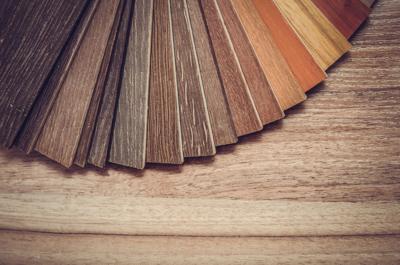New flooring increases your home’s value and makes it easier to keep clean. Even if your home was built recently, switching to a different type of flooring could prevent water damage or decrease the time you spend on sweeping and mopping. Consider these 10 factors when choosing the flooring material for your next remodeling project.
10. Maintenance Requirements
Are you willing to polish and seal stone tiles every few years, or refinish your natural hardwood flooring at least once a decade? Tile needs regular cleaning and a deep scrubbing to clear the grout after a few months of daily use, but it requires a lot less attention than carpet. Make sure you can commit to the maintenance required by the flooring you choose.
9. Color Options
Don’t settle for the same old flooring options when your floor can be a work of art. Seeking out unique colors, patterns, and materials adds extra value to the project without drastically changing the price tag. Many rare hardwood varieties, artistic tile patterns, and colorful carpets are available at the same prices as their more commonplace counterparts.
8. Story Height
Not all types of flooring work well on second, third, and higher floors of a building. These suspended floors tend to flex more as they age, resulting in forces that can damage brittle tiles or slabs of stone. On the opposite end, hardwood and carpet shouldn’t go in the basement because they’re not designed to be installed below grade.
7. Broad Appeal
Installing a very specific type of imported marble or dramatic cultured stone may make you happy now, but how will it appeal to buyers when you choose to sell your home later? You may plan to stay in your current home for years to come, yet eventually you’ll likely sell and want to attract buyers.
6. Installation Ease
You don’t want to wait weeks for custom cutting and careful fitting of unusual tiles or complex parquet patterns. Some installations of sheet vinyl, carpet, and locking laminate flooring can take less than a day per room.
5. Options for Changes
If you’re not sure what flooring to commit to right now, choose a product that is easily changed in the future. This can be due to its ability to accept stains and paint, such as solid hardwood flooring with a surface that is easy to refinish.
4. Subfloor Material
What’s supporting the current flooring determines the next material you can install. It’s usually necessary to remove flooring, especially in cases of carpet and damaged materials, but it’s possible to install new flooring directly over some materials like hardwood and tile. Concrete slabs can only be covered by laminates that can handle moisture, while almost any kind of flooring works over a clean plywood subfloor.
3. Future Challenges
Don’t forget to look ahead to your plans for the future when choosing a floor now. You’ll likely still have the same flooring in five years, but you could also have a toddler, a new puppy, or a in-home business by then too.
2. Installation Assistance
Go beyond just looking for a flooring that comes with an offer for professional installation. Some suppliers will provide furniture relocation and preparation services that take most of the work out of getting your floors remodeled, resulting in a faster and easier installation process.
1. Overall Durability
Finally, consider how long each type of flooring with last based on your daily usage of each room. Pairing tougher materials in the bathroom, kitchen, and entryways will allow you to enjoy your floors for a decade or longer before they begin to show their age.



